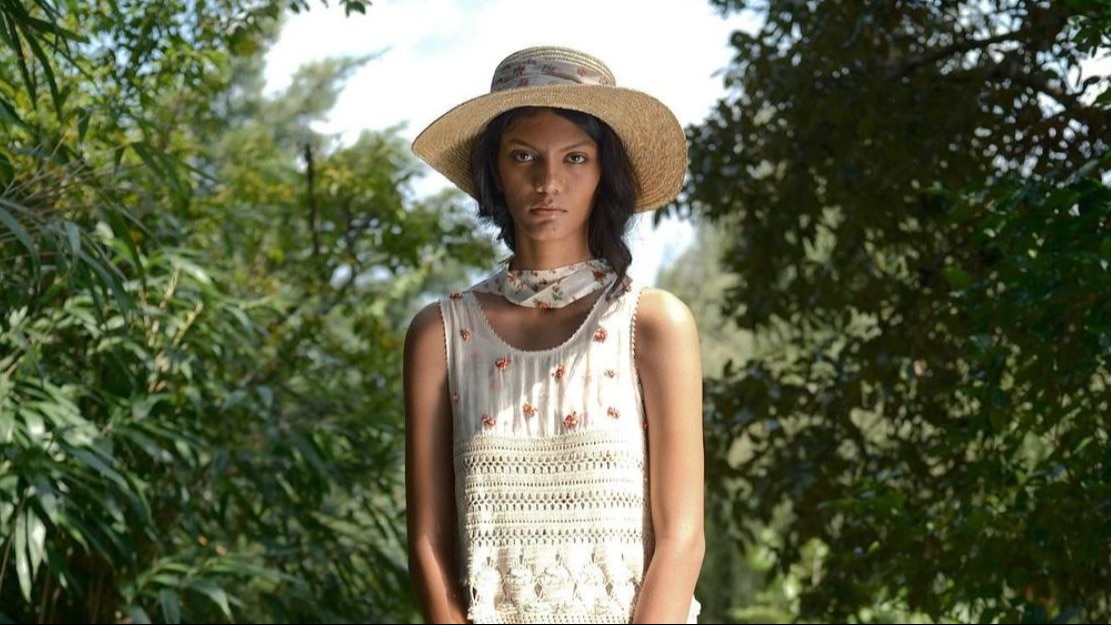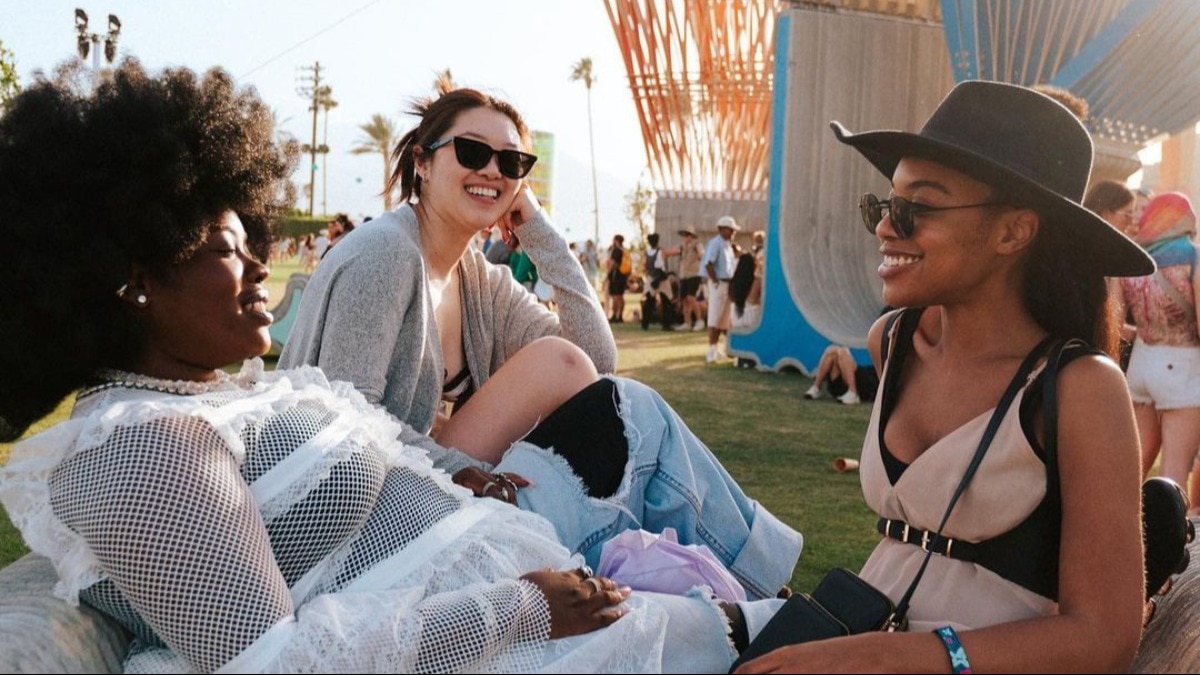
What is street style really?
Learned poses, expressions gleaned from models, borrowed clothes—and on top of that—a luxurious handbag. Anyone else enjoying it?


Is street style, which today seems more like an extension of fashion shows, still authentic? And who truly has influence today?
Suzy Menkes, the British fashion critic, put it quite sophisticatedly in her essay for the New York Times, where she offers a fitting metaphor of crows and peacocks. “Someone once called us ‘black crows’—us fashion people who gathered in front of an abandoned, crumbling building downtown, wearing Comme des Garçons or Yohji Yamamoto uniforms. ‘Whose funeral is this?’ passers-by whispered to each other with a mixture of caring and perverted interest, while we slowly lined up in front of some cool, underground show,” recalls Menkes of the 1990s.
And she continues: “Today, people look more like peacocks than crows. They pose and show off in dresses with various prints, balance on spider legs in club sandwich-high boots, or thigh-high boots, and hide under intricately-shaped coats decorated with 3D flowers.” It must be added that Suzy Menkes wrote the observation back in 2013, almost ten years ago, when street style was still in its infancy for many of us, and represented fresh inspiration.

Backtrack to a century ago, and some exceptional personal style can be gleaned from the images of attendees at the Royal Ascot race—Lady Bomanji and Mrs Bolton in saris worn with elbow-length gloves, little umbrellas in tow, embroidered round-toes completing the look. And with the onset of photography in the 19th century, ethnographic images of the women and men of India served as snapshots for the British Raj. Today, these serve as clues to understanding the now vanishing traditions—and every day, street fashion—of local regions and a time gone by.
Street style, then, is not entirely new. And not so purposeless, either.
Today, in the 21st century, we are coming to terms with an altogether new definition of street style. The once hallowed space of actors, artists, and editors has been infiltrated by self-proclaimed intruders—in the form of fashion bloggers. According to Suzy, the so-called look-at-my-clothing culture emphasises expressiveness and flamboyance, but at the same time, is accompanied by what journalists of her calibre stubbornly refused: gifts from designers and brands in the form of luxury clothing.
Of course, fashion is not about the style of a few, privileged women. In addition, over the years, dressing up has been completely monetised and moved away from reality—through popular fashion influencers who later founded their own brands. Originality and a natural feeling for fashion have become a commodity on Instagram, a glue for all kinds of collaborations, through which you can rise to the top league—to the first rows of the most prestigious shows. And so, why would you sit in a sweater and jeans, when you can wear a total look from the latest Dior collection?
When we talk about fashionable street style, we tend to perceive it as a contemporary phenomenon—like how, in 2005, photographer Scott Schuman started his famous blog, The Sartorialist. At the same time, fashion and social magazines also began to fill more often with the off-duty style of models and celebrity outfits, captured by the paparazzi.
However, the truth is that many of the actors whose styles people fawn over are not necessarily displaying true, personal style. Even while supermodel Kate Moss seemed unique, she, too, drew inspiration from the street style of her predecessors. Her icons were Brigitte Bardot, Marianne Faithfull, or Anita Pallenberg, the ‘It Girls’ of the second half of the ’60s, who are characterised by free-spiritedness, sexy nonchalance, and who, among other things, brought into fashion a new sub-genre of tabloid photography— ‘airport style’.

In India, where actors command feverish fan-following, stepping out for an ‘airport look’ or a ‘casual’ outing is akin to dressing up for most, regular folk. But there is a difference in the ‘airport looks’ of the past—today, while the likes of Priyanka Chopra Jonas and Deepika Padukone are mixing and matching (even endorsing) designer brands, the icons of yesteryears had mainly their personal wardrobes to turn to, with styles from (often) unrecognised brands and boutiques...
“Brigitte [Bardot] was an example, an icon, and an idol for thousands of women around the world who aspired to imitate her style—brash, rebellious, courageous, and free from any false pomp,” writes HenryJean Servat in Brigitte Bardot: My Life in Fashion. “She suffered from peace and quiet, but rejected luxury, so she preferred to organise bohemian-style parties for her closest ones. She wanted to have fun and saw her whole life as a celebration,” continues Henry, and one can’t help but compare it to today’s manner of fashion influencers presenting life as a series of randomly captured exciting moments, as one big party

Even though paparazzi photos of celebrities had an indisputable influence on the development and appearance of fashion blogs in the zero years of this century, street style, as a specific fashion genre, was born decades earlier. “Before Scott Schuman, Bill Cunningham roamed the streets of New York with a camera,” is a common phrase introducing the life of the ‘grandfather’ of street style photography, in the days when Diana Vreeland was the head of fashion magazines. Bill was famous for his consistent and ascetic attitude, his favourite thing to do was to ride his bike, wearing a blue jacket. He didn’t accept any gifts either, and when he had to take pictures at parties, he refused even refreshments.
Thanks to him, we can still be inspired by Jackie Kennedy’s outfits, although famous faces were not his goal. Once he ran into an elderly, chic lady in a fur coat with a beanie and sunglasses. However, he was completely preoccupied with the coat and the line of the shoulders, and so only later did he find out that it was Greta Garbo. When today we think about the authenticity of street style, this can be its Achilles heel. Even Scott Schuman admitted it in an interview for the men’s magazine Gear Patrol—photographers focus more often on well-known influencers than on distinctive outfits. And then there’s the pressure on quantity brought on by the move to online. “I know from an interview with one photographer that the assignment is usually 50 to 60 pictures a day, but when you go to a fashion event, it doesn’t mean there are going to be 50 to 60 people who look great.”
Bill Cunningham perceived this already in the 1970s, and never changed his approach. When his colleagues gathered around Catherine Deneuve’s car during Paris Fashion Week in 2008, the photographer just spun around. “Look how crazy the paparazzi can get because of Catherine Deneuve. But she isn’t wearing anything interesting,” he once said. Bill later explained the problem with the French-film icon in words that can be generalised to contemporary street style as well. “I don’t enjoy photographing women who borrow clothes. I prefer parties where they dress up with their own money and wear their own things... because when you invest from your own, your fashion choices look different.”
Now how does this translate to the Indian, digital fashion landscape? If the bloggers and actors are dripping in designer looks, then how authentic is their fashion expression? And are their followers taking cues from a manufactured idea of fashion, put together by a stylist or from only the pieces that were available in a lookbook?

It is, perhaps, for this reason that many designers and their campaigns have begun celebrating simpler times and styles from the local regions of India—these styles form the bedrock of a truer expression, and when paired with the latest trends around the world, create an altogether, fresh personal style, perfect for the streets.
During the pandemic, a bag of Instagram accounts that map the style of people from metropolises around the world burst open—Parisiens in Paris, Londoners in London, Copenhagen Front Row, even Praguers in Prague, although photography of the domestic scene faded away over time. But hunting stylishly-dressed people in the streets requires either their higher concentration, or a huge amount of time invested, but preferably both.
Accounts such as Johnny Cirillo’s @watchingnewyork— who is being talked about as the next to Bill Cunningham— are a return to the pure joy of fashion...they radiate relaxation, self-confidence, individuality, and diversity. Another one, @street.style.hunter. maps the outfits of people in Lviv and other places in Ukraine and is, among other things, proof of why fashion is so important to our lives—it gives us the feeling that we are alive. Bill Cunningham once again captured it brilliantly in his documentary: “People outside the industry tend to see fashion as a trinket that loses its meaning in the face of social upheaval and real issues. However, the truth is that it is actually the armour that helps us survive everyday reality. I don’t think you can just get rid of it. It would be like ending civilisation.”

But can this purity and naturalness also be translated into street style, which accompanies shows, and is firmly integrated into the marketing strategies of fashion Houses? This is partially due to fashion week in Copenhagen, which has become famous for its local atmosphere and programme, which also presents a number of more affordable brands. Photographer Seleen Saleh, who published the book Street Culture a few years ago, also noticed this: “The images coming out of Copenhagen are refreshing. They also focus more often on dark-skinned visitors and their great style. And much less on influencers,” he told PopSugar.
In addition to diversity, sustainability is given a crucial space in Copenhagen, which together with the upcycling and recycling of clothes become a symbolic counterweight to the flashy, disposable luxury and ‘It Bags’ culture. The current inclination towards micro-influencers, who establish cooperation with niche brands and still mean it (at least somewhat) sincerely, could stir the stagnant waters. And then, there is the arrival of generation Z, which still enjoys randomness, weirdness, and, recently, the BeReal app, which takes a picture of you (almost) as you look. And so, the answer to the question from the beginning of this article can be a cautious and slightly optimistic: yes, street style can be authentic again.
Story also written by Klára Jindrová









